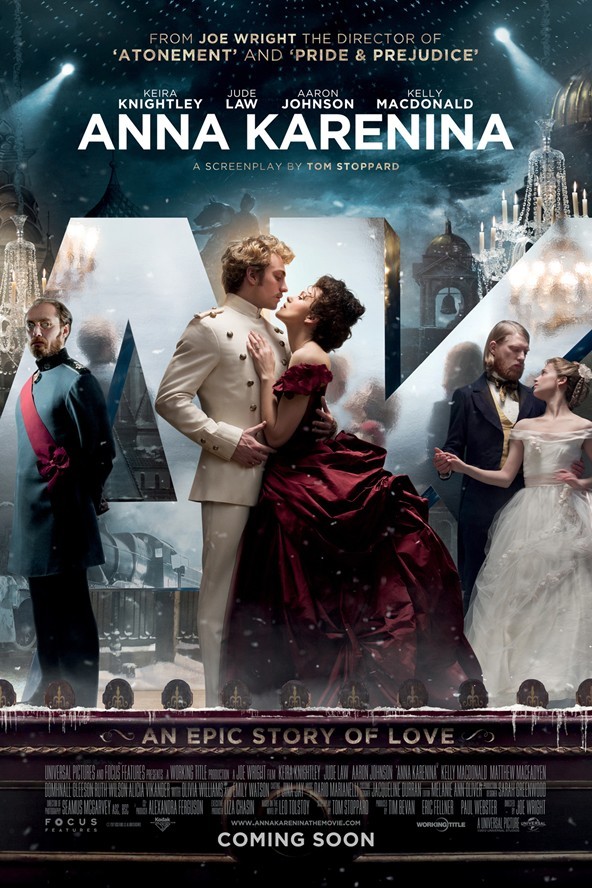Literary adaptations are a peculiar task for film directors. It’s a bit like asking a percussionist to transpose his concerto part into a clarinet part to play. Perhaps it is a bit easier than that given that both film and novels deal with narrative and language. Regardless, the two media require a great deal of translation to succeed — particularly when the written subject is an enormous, philosophical and verbose Russian homage to femininity, adultery and love gone awry. Joe Wright’s “Anna Karenina” is one of the most visually stunning films of the year, but it sometimes gets lost in translation.
Anna Karenina (Keira Knightley) stands as the centerpiece of this adaptation of Tolstoy’s eponymous book. She is dully married to the drab, boring and proper Alexei Karenin (Jude Law) who can only be said to love her in a way of meeting upheld Russian social norms regarding marriage. Anna’s brother, Oblonsky (Matthew MacFayden), has been fooling around with a governess, much to the dismay of his wife. When Anna goes to help fix the problem, she ends up falling into an adulterous love affair with the young, seductive Count Vronsky (Aaron Taylor-Johnson). A tragedy of self and social destruction spins out from this lust-fueled decision to buck her loveless marriage.
Direction and filmography most successful elements
Joe Wright’s prior filmography ensured this take on Tolstoy would be in able hands. His last two literary adaptations, Jane Austen’s “Pride & Prejudice” and Ian McEwan’s “Atonement,” were critically acclaimed and Oscar nominated. These films have also been opportunities for Knightley to shine as the heroine each time. “Anna Karenina” is almost the perfect amalgamation of the prior two adaptations, taking the vibrant colors and love of “Pride” while throwing in plenty of the bleakness from “Atonement.” Moreover, fans of “Pride & Prejudice” should be pleasantly shocked by MacFayden’s versatility. He has both the charm of a Darcy and the mustached, pudgy, adulterous and lovable Oblonsky in him.
Where “Karenina” most succeeds is its stunning composition on a technical level. Each shot’s colors, from backdrops to costumes to the skin of the actors themselves, jump out of the screen. The camera never seems to cut either. Almost every scene gives way to another with a clever, stage-friendly transition. It’s this that gives the film a quality almost like a train heading for the end of its tracks. Each moment marked by pageantry and rhythm, anxiety building in the midst of fading comfort as sin’s inevitable punishment awaits.
An adaption with aesthetic appeal
The performances are all spot-on too. Knightley seems to have found her niche as a costume drama queen, playing Karenina with the requisite grace and silky disposition which Tolstoy deftly contrasted with heinous action. Taylor-Johnson’s Vronsky has eyes blue as icebergs and carries himself with a coldness befitting them. Given Law’s past problem with affairs, his turn as Anna’s faithful, morally upright but frigid husband is ironic but played with respectable precision. MacFayden is a show-stealer, from his boisterous conduct to his remarkable handlebar mustache.
As a literary adaptation, this feature is remarkably ambitious. Given the style Wright chose to shoot it in, he combines literature and film with theatrical dramaturgy. Curtains open and close, scenes are played out above a stage and creativity is as much in the cutaways as the characters. At its lesser points, the story gets lost in a gaudy emphasis on “hey-look-at-me” set design and clever camera techniques. But for the most part, it simply adds to the melodrama such a poignant and expansive novel would require in a film adaptation. It’s an exploratory, innovative and beautiful movie based on an exploratory, innovative and beautiful novel.







